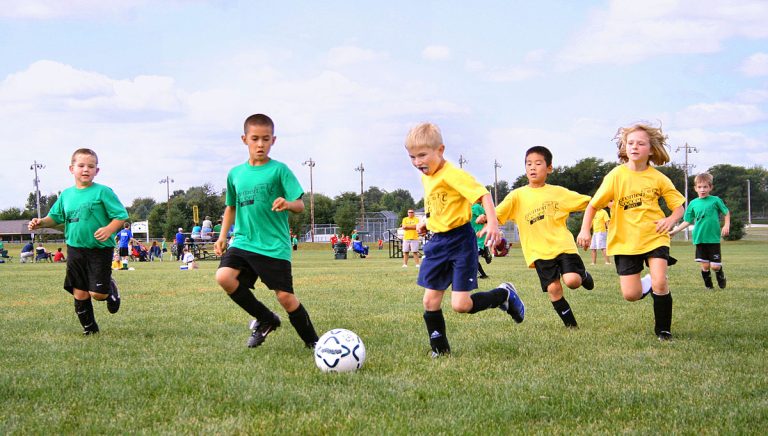Relative Energy Deficiency in Sport (RED-S) and Eating Disorders Among Adolescent Athletes
RED-S, or Relative Energy Deficiency in Sport, is a debilitating syndrome prevalent among adolescent athletes, often accompanied by disordered eating, hindering their performance and well-being.
Here’s an 24hscore overview of RED-S and its association with disordered eating in teenage athletes.
MY EXPERIENCE WITH DISORDERED EATING AS A TEEN ATHLETE

Picture a sunny October afternoon in Florida, the perfect setting for a cross country practice. Yet, for me, it meant pushing my body to its limits amidst growing difficulty. Lightheadedness and a rumbling stomach were my companions during every workout. Battling stressful family dynamics and a perfectionist mindset, I sought solace in controlling my food intake, leading to alarming physical and mental deterioration. At just eleven years old, I was diagnosed with Anorexia Nervosa, compounded by the “female athlete triad” due to my involvement in sports.
Though my journey began with struggle, it’s also a testament to resilience. My story aims to shed light on the universal nature of eating disorders and inspire a collective effort toward nurturing mental and physical well-being in female athletes of all ages.
RELATIVE ENERGY DEFICIENCY IN SPORT (RED-S), FORMERLY KNOWN AS FEMALE ATHLETE TRIAD
Initially termed the Female Athlete Triad, this condition encompasses low energy availability, menstrual dysfunction, and low bone mineral density. However, its renaming as RED-S in 2014 acknowledges that similar symptoms can affect both genders, emphasizing its broader relevance and significance.
UNDERSTANDING RED-S

RED-S, formerly known as the Female Athlete Triad, is a complex and interlinked cycle with profound long-term health implications. It represents a syndrome characterized by impaired physiological function resulting from insufficient energy availability. Symptoms include but are not limited to:
- Impaired metabolism
- Menstrual irregularities
- Compromised bone health
- Weakened immune system
- Insufficient protein synthesis
- Impaired cardiovascular function
According to the American College of Sports Medicine Position Stand on Female Athlete Triad, if any of these symptoms are detected in an athlete, it is imperative to screen for the others as they frequently co-occur.
If your athlete experiences fatigue without other symptoms, it might indicate iron deficiency anemia. Learn more in our post, “Recognizing the Signs & Symptoms of Iron Deficiency Anemia.”
LOW ENERGY AVAILABILITY
The primary cause of RED-S typically stems from athletes not consuming sufficient energy or fuel to support their activity levels and basic bodily functions.
To simplify, it can be expressed as: energy expenditure significantly exceeds energy intake.
This might seem contradictory initially, as athletes may appear to eat adequately. However, it’s crucial to understand that calories are essential not only for fueling sports activities but also for sustaining daily tasks like attending school and basic bodily functions like digestion and maintaining heart function.
Low energy availability can occur unintentionally when athletes are unaware of their energy needs or lack the time and resources to consume adequate food to match their activity levels, including sports. However, it frequently arises due to intentional actions such as disordered eating practices. Athletes may deliberately restrict certain foods, food groups, or overall calorie intake, ranging from mild restrictions to severe cases resembling anorexia.
WHY INADEQUATE NUTRITION IS A CONCERN FOR ATHLETES
Insufficient energy availability serves as the catalyst for the development of RED-S. This condition leads to a cascade of physiological dysfunctions, negatively impacting athletic performance, recovery, and overall bodily functions.
Inadequate nutrient intake results in insufficient essential building blocks for hormones and bodily structures, including bones and muscle tissue. This not only affects athletic performance acutely but also disrupts various bodily systems and impairs concentration.
Without adequate calories and a balanced distribution of macronutrients (carbohydrates, proteins, and fats), the body cannot produce essential hormones or perform vital functions. Consequently, the body may prioritize essential functions over non-essential ones that require additional energy, such as reproductive health. In female athletes, this can significantly impact menstrual cycles or delay menarche, subsequently affecting long-term bone and reproductive health.
Calcium, vital for muscle contraction and bone health, becomes deficient due to low energy availability. The body may leach calcium and vitamin D from bones to maintain essential balances in the bloodstream, leading to bone weakening and increased susceptibility to stress fractures.
ASSESSING RED-S
Diagnosing RED-S requires medical evaluation, preferably by practitioners familiar with sports medicine. Sports medicine professionals, including Physical Therapists, Athletic Trainers, and Registered Dietitian Nutritionists specializing in sports nutrition, are well-versed in recognizing RED-S. While they cannot diagnose the condition, they can guide athletes toward appropriate medical care.
TREATMENT APPROACH
The initial step in treating RED-S typically involves suspending sports training and competition to reduce energy expenditure. This period of rest allows the body to conserve energy and initiate recovery.
Following rest, athletes often need to increase their calorie intake significantly. Collaborating with a Registered Dietitian Nutritionist experienced in sports nutrition is invaluable, as they can provide personalized guidance on nutrition and energy requirements. Supplementing with essential nutrients like calcium, vitamin D, or omega-3 fatty acids may also be recommended, although individualized advice is essential.
Subsequent steps focus on monitoring the body’s response, aiming to restore weight if necessary, strengthen impaired physiological functions, and facilitate injury healing. Physical therapy may complement the recovery process.
Returning to sports activities should occur cautiously under medical supervision. A RED-S risk assessment model categorizes athletes into high, moderate, or low-risk categories, guiding the timing of return to training.
RED-S WARNING SIGNS FOR PARENTS & COACHES

Awareness of warning signs is crucial for parents and coaches:
- Pay attention to changes in eating behaviors and attitudes toward food.
- Look out for physical signs such as intolerance to cold, hair loss, or sudden weight loss.
- Monitor growth charts and seek medical attention for unexplained declines.
- Encourage open communication with athletes about their feelings and experiences.
- Emphasize the importance of healthy food choices and body positivity.
- Use available resources, such as screening tools, to identify potential issues early.
MY RECOVERY JOURNEY
My personal experience illustrates the profound impact of RED-S:
As a young athlete, RED-S delayed my development, resulting in stunted growth and menstrual irregularities. Despite eventually achieving a healthy weight, I continued to struggle with metabolically compromised bones, leading to stress fractures and ongoing injuries.
A decade-long battle with anorexia culminated in a frightening relapse during college, marked by severe physical symptoms and cardiac abnormalities. With comprehensive treatment and unwavering support from healthcare professionals and loved ones, I embarked on a journey of recovery.
Today, I am deeply grateful for the care that guided me through adversity. With a doctorate in Physical Therapy, I embrace a healthy lifestyle and pursue my passions with newfound vitality.
In closing, understanding and addressing RED-S require a collaborative effort involving athletes, parents, coaches, and healthcare providers. By fostering awareness and providing support, we can empower athletes to thrive physically and emotionally.







